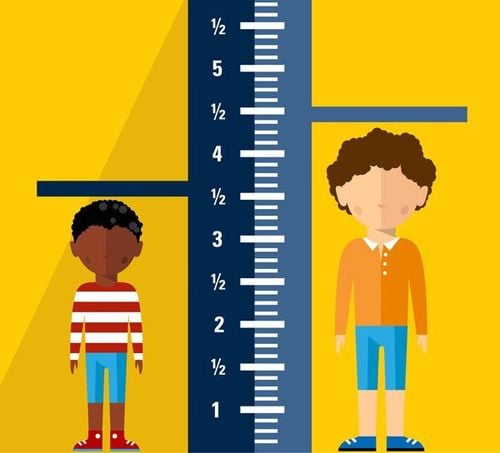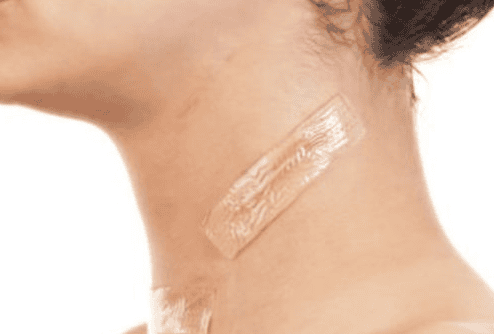Corticosteroids are a class of anti-inflammatory medications prescribed by doctors to treat various diseases. However, these medications can impact a child's growth. To prevent potential side effects, parents should ensure that their children use them strictly as directed and avoid giving them without proper medical guidance.
1. What are Corticosteroids?
Corticosteroids (or glucocorticoids) are a class of anti-inflammatory medications used for various indications, with active ingredients such as prednisolone, methylprednisolone, triamcinolone, beclomethasone, betamethasone, dexamethasone, and budesonide, etc,…
Corticosteroids are not only administered in oral or injectable forms but are also available as single agents or in combination in formulations such as nasal sprays, inhalers, nebulizers, and topical creams/ointments.
2. Do corticosteroids have an impact on pediatric height development?
Height reduction in children using corticosteroids is not uncommon, typically occurring in those on a daily dosing regimen, less frequently in those using an every-other-day regimen, and it can even happen with inhaled corticosteroids.
This adverse effect can occur even in the absence of other visible side effects such as rapid weight gain, disproportionate body changes characterized by a rounded face, increased fat in the trunk area, fat deposits in the nape, abdominal striae, and hirsutism, etc,…
Corticosteroids inhibit growth in children through various mechanisms. Key mechanisms include their effects on the secretion and activity of endocrine hormones (such as growth hormone, GH) and metabolic processes (related to bone formation, collagen synthesis, reduced calcium absorption in the intestines, and increased calcium excretion in urine, etc,…).
Growth hormone (GH) is secreted by the pituitary gland and regulated by the hypothalamus. The extent of corticosteroid impact on growth depends on the specific corticosteroid, the route of administration, the dose, and the duration of treatment.

Corticosteroids with prolonged effects often have the most adverse impact on children's growth. The higher the dose and the longer the duration of use, the greater the effect on growth. Generally, if corticosteroids are discontinued, children may resume growth. However, prolonged use of oral or injectable corticosteroids can have lasting effects on growth even after the treatment regimen is stopped. Growth impairment due to corticosteroids can occur even with inhaled formulations when used for extended periods during childhood. According to current scientific data, the impact of inhaled corticosteroids is generally quite low. And even diseases such as asthma, as well as other chronic diseases, can also affect the height and development of young children.
Topical corticosteroids are found in various formulations, either as single agents or in combination with other antibacterial and antifungal ingredients. The use of potent corticosteroids over extended periods, or applying them widely and applying a compression bandage, increases the risk of systemic absorption in children. Young children have thinner skin, making them more susceptible to systemic absorption of corticosteroids, leading to systemic effects. The use of corticosteroids, even those with mild to moderate potency, on a continuous basis can cause systemic effects and inhibit the hypothalamic-pituitary axis, impacting the growth of young children. Data from a meta-analysis involving over 500 children aged 3 months to 18 years using topical corticosteroids for 2 to 4 weeks showed that hypothalamic-pituitary axis suppression was observed in 20 children (approximately 4%).

3. How to prevent and minimize the adverse effects of corticosteroids on children's growth?
It is not advisable to self-medicate children without a doctor's examination and consultation. You should only use corticosteroids for children when prescribed by a doctor and should not purchase additional medications without a reevaluation or discussion with the treating physician. Ensure that the child takes the exact dosage as prescribed, and do not adjust the dose on your own. Typically, the doctor will choose the most appropriate corticosteroid at the lowest effective dose and for the shortest duration possible.
If you are unclear about the effects of the prescribed medications, you should ask the doctor or pharmacist to obtain complete information before use.
In the case of using topical corticosteroids in young children, you need to carefully read the product's instructions, apply the recommended amount, and spread a thin layer on the skin. Avoid applying a compression bandage to the treated area and do not apply the medication immediately after a hot bath.
Prolonged use of corticosteroids may be necessary in some cases of chronic conditions in children. You should follow the doctor's prescription and advice closely and should not stop the medication on your own due to concerns about side effects. Discuss any unusual signs or symptoms in your child with the doctor for further advice or timely intervention if necessary.
For children on long-term corticosteroid therapy, a balanced diet rich in protein, calcium, and vitamin D, while limiting saturated fats, sugars, and sweets, along with moderate physical activity, is very important.
Typically, children's height can increase by age as follows:
- From 2 to 4 years: 5.5 - 9 cm/year
- From 4 to 6 years: 5 - 8.5 cm/year
- From 6 years to pre-puberty: 4-6 cm/year (for boys) and 4.5-6.5 cm/year (for girls)
- During puberty, children may grow an additional 6-14 cm/year.
If you feel that your child is not developing appropriately in terms of physical growth or skills for their age, or if there are signs of poor appetite or slow growth, you may consider taking your child for a nutritional consultation and evaluation of other issues to ensure optimal development.
To arrange an appointment, please call HOTLINE or make your reservation directly HERE. You may also download the MyVinmec app to schedule appointments faster and manage your reservations more conveniently.








